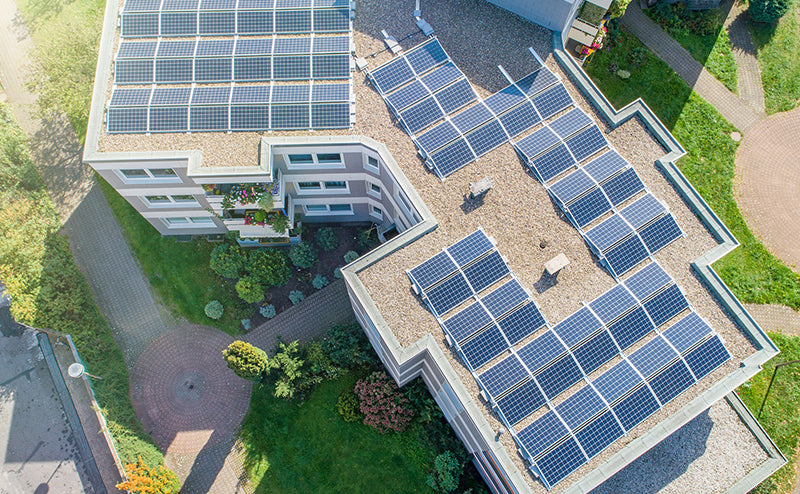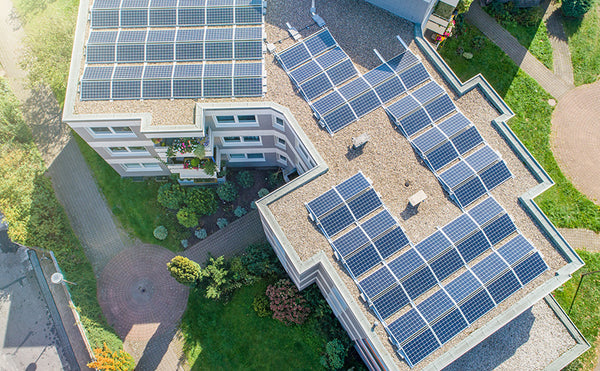
Does you know how many solar modules are enough

When we start to install a solar system, we may be confused that how many solar modules are enough to supply the energy we need. Due to the lack of experience, we may waste solar resources or find it isn`t enough to support the energy consumption. The number of solar modules you need should depend on your electricity consumption and the goals you want to achieve.The size of solar systems is measured in kilowatts. Each kilowatt of your solar system generates between 3 and 5 kWh of clean, renewable electricity per day, depending on the location and orientation of your roof.
Factors that determine the number of solar panels you need for your home. Generally, it takes 3 to 4 solar panels to generate 1 kilowatt. When purchasing a new solar panel system, don’t necessarily go with a standard approach. Several factors must be considered to determine how many solar panels are needed to power a home.
Some of the most important things to consider when determining the number of solar panels you need are as follows: Your daily energy consumption. Reviewing your electricity bills is essential to learning more about your current energy consumption patterns. Collect electricity bills from the last few years and look for your “average daily energy consumption” on each bill – usually on the first or second page of the bill and in kilowatt hours; or “kWh.” Write down this figure for each bill you have and then take the average of all the bills. The final figure is your average energy use over 24 hours, including daytime and nighttime hours.
Households with more members typically consume more electricity, requiring more solar panels to be installed to improve electricity production. Electricity consumption is critical because it determines how much electricity your solar system should generate. If your home consumes 12,000 kWh per year and you want to use 100 percent solar power, your system must be able to produce this amount of energy.
The size of your home and available roof space
Larger homes consume more electricity, requiring more solar panels to be installed. However, you have the extra roof space needed for larger solar panel installations. Of course, there may be exceptions, such as a 2,000-square-foot home with new appliances that use less energy than a 1,200-square-foot home with older, less efficient appliances. In terms of installation, solar panels can be installed on a wide variety of surfaces.
However, the number of solar panels that can be installed on your home may be limited by the condition of your roof. For example, if you have a chimney, a rooftop air conditioner or a skylight, you will need to install panels around such features. Shaded roofs are also not ideal for panels. In addition, many leading solar companies do not work on asbestos roofs because of the potential health risks to installers.
Sunlight hours
Solar panels need sunlight to function. Most users do not realize that the amount of sunlight their home receives, or the number of hours of sunlight they receive, can directly affect the number of solar panels they need. If there is enough sunlight, more energy can be converted into electricity. Another factor to consider is the time of day your solar panels are exposed to sunlight.
To compensate for less sunlight reaching the panels, a house with roof shading may need more solar panels than a house without shading. For a home that uses the most energy in the morning, it may make more sense to install solar panels on an east-facing roof surface to catch the morning sun and produce free electricity when you need it most.
Your Energy goals
The size of solar panels you need also depends on how much you want to save on your electricity bill in the future. Do you want to meet only your daily energy needs or add a battery to become nearly self-sufficient? Keep a specific goal in mind for how much of your energy needs you should produce with your new solar system, and share this goal with your solar system designer.
Your energy goals will directly affect the size of the solar panels you need, the number of solar panels you need, and the design for future expansion. Even if you choose a smaller system that will not meet 100% of your energy needs, your new investment will help reduce your electricity costs almost immediately and you can easily add a battery in the future. If you decide to start with a small system, make sure your supplier has taken reconfiguration into account when designing it. You may want to increase the size of your system or add battery storage if your circumstances change in the future.
Solar panel specifications
Panel wattage varies by model and manufacturer, but most are between 250 and 330 watts. If the individual wattage of the panels is higher, you will need fewer panels to achieve a given energy generation goal. If roof space is limited, high-powered panels can make the system more compact. How many solar panels do I need for common household items?
If you are considering installing solar panels in your home, you may be wondering how many panels are needed to power certain appliances. However, it is important to understand how solar energy works. Around noon, solar panels produce the most energy. Energy production is much lower in the early morning and late afternoon because less sunlight hits the panels then. Households use the most energy in the evening and early morning. Since solar panels depend on sunlight, you have no control over the amount of energy they produce.
Unless you use a solar battery to store energy, it is not feasible and potentially dangerous to power household appliances directly with panels. If you connect your home appliances directly to the panels and inverter, a dark cloud passing over your home will cause the power to go out. The most realistic approach is to synchronize the solar panels with your local electricity supply to act as a single source of electricity. If there is not enough solar energy to power your household appliances, the power grid will provide the rest of the energy.
If your panels produce too much energy, you can feed it back into the grid and get a credit on your next electric bill. Sunlight is a variable input, and your electronic equipment must be operational 24 hours a day, seven days a week. Therefore, you cannot directly compare the efficiency of panels to that of household appliances. The perfect way to organize this is to create an Excel or Google spreadsheet. Count the power consumption of each appliance on your boat, including the refrigerator, lights, computer, etc., by checking the power consumption in watts or amps on the appliance label. Use all watts or amps in your calculations and compare them to the solar panel’s stated power output.
Facebook: Xinpuguang Solar Panel
Instagram: xinpuguangsolar
Pinterest: XinpuguangSolarPanels
Homepage: https://xinpuguangsolar.com
Email address: Philip@isolarparts.com
- Le choix d'une sélection entraîne une actualisation complète de la page.

